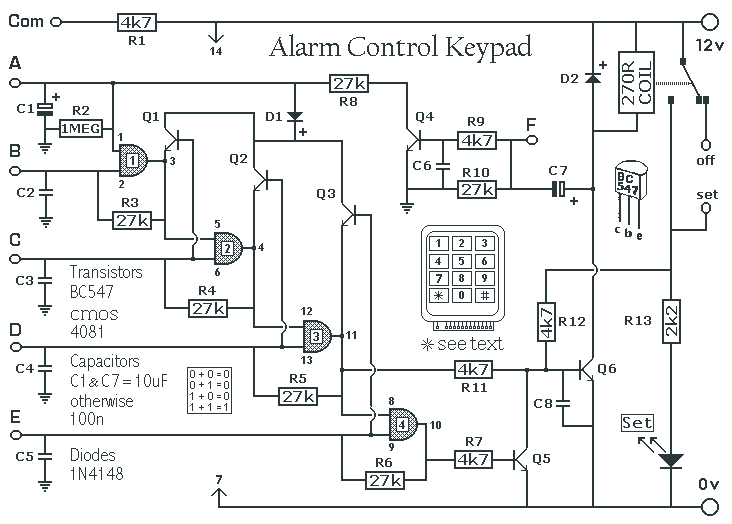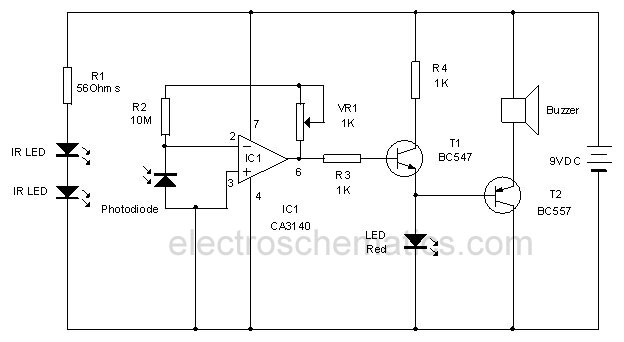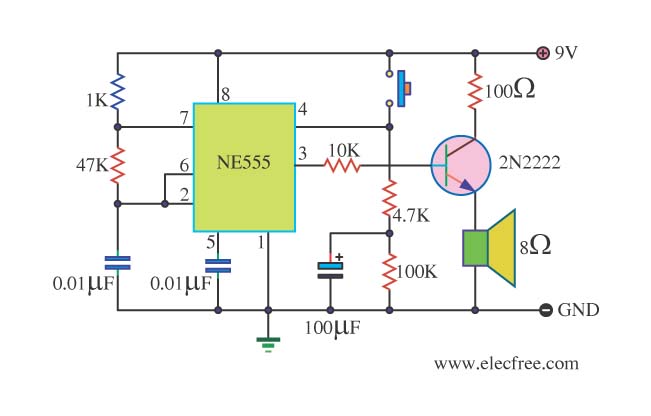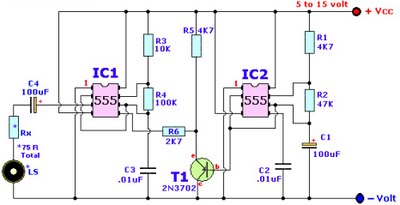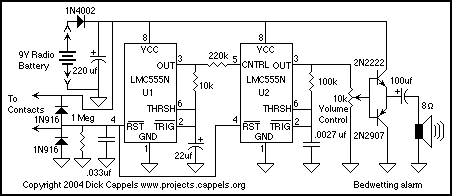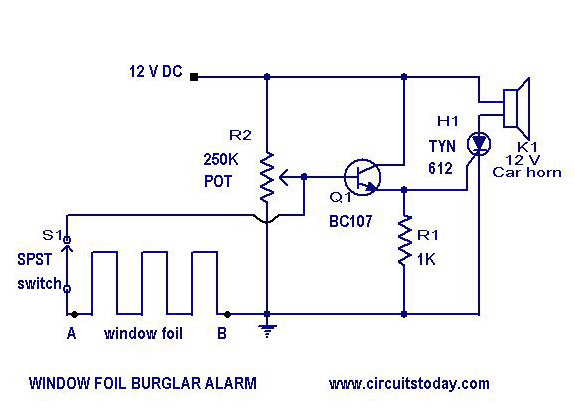
Factory Alarm
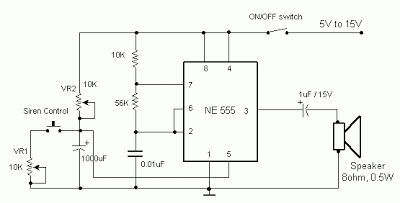
The frequency is controlled by pin 5 of the integrated circuit (IC). When the power supply is activated, the capacitor charges gradually, which alters the voltage at pin 5 of the IC, causing the frequency to increase incrementally. Once the capacitor is fully charged, the frequency stabilizes and no longer increases. When the push button siren control switch is held down, the capacitor discharges, resulting in a decrease in the siren frequency.
The circuit employs a capacitor connected to pin 5 of the IC, which plays a crucial role in frequency modulation. Initially, upon powering the circuit, the capacitor begins to charge through a resistor, leading to a gradual increase in voltage at pin 5. This voltage change affects the oscillation frequency of the IC, causing it to rise steadily. The time constant of the charging process, determined by the values of the capacitor and resistor, dictates how quickly the frequency ramps up.
Once the capacitor reaches its maximum charge, the voltage stabilizes, and the frequency remains constant. This stable frequency can be utilized for various applications, such as generating a consistent tone for alarms or sirens.
The circuit also incorporates a push button switch that, when pressed, allows the capacitor to discharge. This discharge is facilitated through a discharge path that may include resistive elements to control the rate of discharge. As the capacitor discharges, the voltage at pin 5 decreases, leading to a reduction in frequency. The design ensures that the frequency modulation is responsive to user input, allowing for dynamic control of the siren's sound.
Overall, this configuration provides a simple yet effective method for frequency control in electronic circuits, particularly for alarm systems where variable sound output is desirable. The interaction between the capacitor's charge state and the IC's frequency output demonstrates fundamental principles of electronic timing and control.The frequency is controlled by the pin 5 of the IC. When the supply is switched ON, the capacitor charges slowly and this alters the voltage at pin 5 of the IC hence the frequenct gradually increases. After the capacitor is fully charged, the frequency no longer increases. Now when the push button siren control switch is held depressed, the capaci tor discharges and the siren frequency also decreases. 🔗 External reference
The circuit employs a capacitor connected to pin 5 of the IC, which plays a crucial role in frequency modulation. Initially, upon powering the circuit, the capacitor begins to charge through a resistor, leading to a gradual increase in voltage at pin 5. This voltage change affects the oscillation frequency of the IC, causing it to rise steadily. The time constant of the charging process, determined by the values of the capacitor and resistor, dictates how quickly the frequency ramps up.
Once the capacitor reaches its maximum charge, the voltage stabilizes, and the frequency remains constant. This stable frequency can be utilized for various applications, such as generating a consistent tone for alarms or sirens.
The circuit also incorporates a push button switch that, when pressed, allows the capacitor to discharge. This discharge is facilitated through a discharge path that may include resistive elements to control the rate of discharge. As the capacitor discharges, the voltage at pin 5 decreases, leading to a reduction in frequency. The design ensures that the frequency modulation is responsive to user input, allowing for dynamic control of the siren's sound.
Overall, this configuration provides a simple yet effective method for frequency control in electronic circuits, particularly for alarm systems where variable sound output is desirable. The interaction between the capacitor's charge state and the IC's frequency output demonstrates fundamental principles of electronic timing and control.The frequency is controlled by the pin 5 of the IC. When the supply is switched ON, the capacitor charges slowly and this alters the voltage at pin 5 of the IC hence the frequenct gradually increases. After the capacitor is fully charged, the frequency no longer increases. Now when the push button siren control switch is held depressed, the capaci tor discharges and the siren frequency also decreases. 🔗 External reference
Warning: include(partials/cookie-banner.php): Failed to open stream: Permission denied in /var/www/html/nextgr/view-circuit.php on line 713
Warning: include(): Failed opening 'partials/cookie-banner.php' for inclusion (include_path='.:/usr/share/php') in /var/www/html/nextgr/view-circuit.php on line 713
